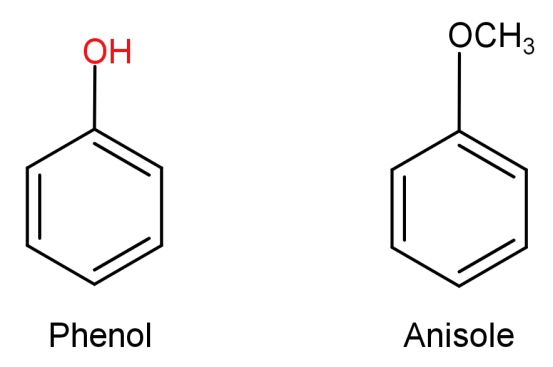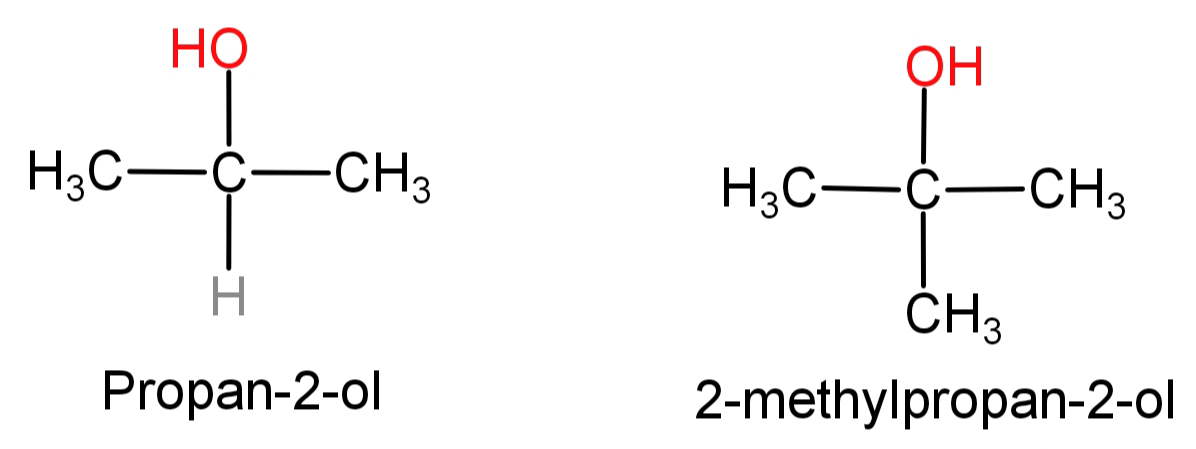
How do you convert the following?
(A)Phenol to anisole
(B)Propan-2-ol to 2-methylpropan-2-ol
(C)Aniline to phenol
Answer
483.9k+ views
1 likes
Hint: For (A): Here to replace (–OH) with (-
For (B): Here to add (
For (C): Here to replace the (
Complete answer:
(A)Phenol to anisole: First let us see the structures of phenol and anisole.

In this what we need to do is replace the H atom from –OH group to
This can be shown in the form of following reaction:

(B) Propan-2-ol to 2-methylpropan-2-ol: First of all let us see the structures of propan-2-ol and 2-methylpropan-2-ol.

In this what we need to do is replace the H atom from the second carbon with a methyl group or we can say addition of methyl group at second carbon atom. This can be done by simply oxidising the given alcohol using
This conversion can be shown in the form of following reaction:

(C)Aniline to phenol: First of all let us see the structures of aniline and phenol.

Here what we need to do is replace the
This conversion can be shown in the form of following reaction:

Note:
For (A): Sodium phenoxide formed as intermediate is a moderately strong base and thus easily undergoes electrophilic aromatic substitution.
For (B): When reacted with ketones and aldehydes the Grignard reagent usually acts as a base and as nucleophile in nucleophilic aliphatic substitution.
For (C): The diazonium salts are light sensitive and easily break down under UV light. Also they are often very explosive.
For (B): Here to add (
For (C): Here to replace the (
Complete answer:
(A)Phenol to anisole: First let us see the structures of phenol and anisole.

In this what we need to do is replace the H atom from –OH group to
This can be shown in the form of following reaction:

(B) Propan-2-ol to 2-methylpropan-2-ol: First of all let us see the structures of propan-2-ol and 2-methylpropan-2-ol.

In this what we need to do is replace the H atom from the second carbon with a methyl group or we can say addition of methyl group at second carbon atom. This can be done by simply oxidising the given alcohol using
This conversion can be shown in the form of following reaction:

(C)Aniline to phenol: First of all let us see the structures of aniline and phenol.

Here what we need to do is replace the
This conversion can be shown in the form of following reaction:

Note:
For (A): Sodium phenoxide formed as intermediate is a moderately strong base and thus easily undergoes electrophilic aromatic substitution.
For (B): When reacted with ketones and aldehydes the Grignard reagent usually acts as a base and as nucleophile in nucleophilic aliphatic substitution.
For (C): The diazonium salts are light sensitive and easily break down under UV light. Also they are often very explosive.
Recently Updated Pages
Master Class 12 Business Studies: Engaging Questions & Answers for Success

Master Class 12 English: Engaging Questions & Answers for Success

Master Class 12 Social Science: Engaging Questions & Answers for Success

Master Class 12 Chemistry: Engaging Questions & Answers for Success

Class 12 Question and Answer - Your Ultimate Solutions Guide

Master Class 12 Economics: Engaging Questions & Answers for Success

Trending doubts
Give 10 examples of unisexual and bisexual flowers

Draw a labelled sketch of the human eye class 12 physics CBSE

Differentiate between homogeneous and heterogeneous class 12 chemistry CBSE

Differentiate between insitu conservation and exsitu class 12 biology CBSE

What are the major means of transport Explain each class 12 social science CBSE

Franz thinks Will they make them sing in German even class 12 english CBSE




